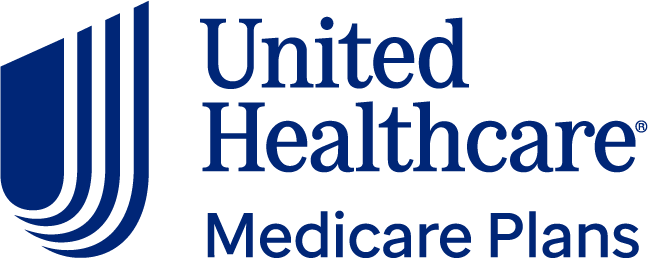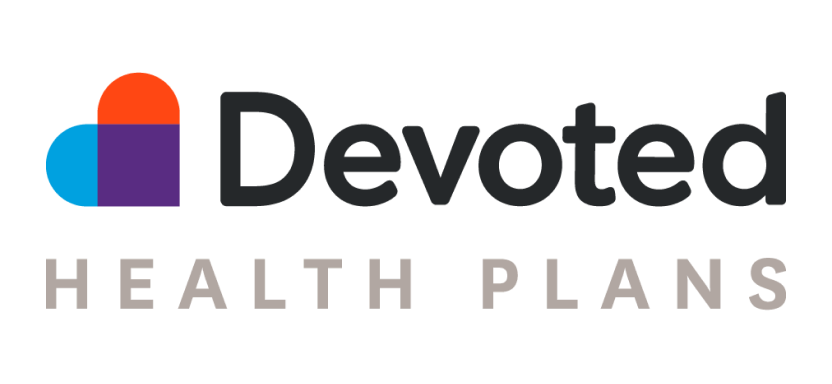Your Medicare Advantage plan in 2026 may be very different than in 2025. Some companies are cutting back on locations and/or benefits, while others are growing quickly. Premiums and out-of-pocket costs are changing, and there are new star ratings to consider. It’s important to shop around each year to find the plan that’s best for you.
We analyzed plans covering 87% of the Medicare Advantage market to choose the best options for 2026 based on quality, cost, benefits and customer satisfaction, among other things.
Here’s the list of Medicare Advantage plans that got our attention. (Information is current as of October 2025.)
Best for size of network: UnitedHealthcare Medicare Advantage.
Best for ratings: Aetna Medicare Advantage.
Best for low-cost plan availability: HealthSpring (formerly Cigna) Medicare Advantage.
Best for Part B Giveback: Humana Medicare Advantage.
Best startup: Devoted Health Medicare Advantage.
Why trust NerdWallet
45+ Medicare companies and brands analyzed by our team of experts.
30+ years of combined experience covering Medicare and personal finance.
Governed by NerdWallet's strict guidelines for editorial integrity.
NerdWallet’s Medicare content, including articles, reviews and recommendations, is produced by a team of writers and editors who specialize in Medicare. Their work has appeared in The Associated Press, Washington Post, Nasdaq, MSN, MarketWatch, Yahoo! Finance and other national and regional media outlets. They have been cited in publications including Healthline, and appeared on NerdWallet's "Smart Money" podcast.
Best Medicare Advantage companies in 2025-2026
Insurance company | CMS star rating | States available | Members in high-rated plans | Member experience | Learn more | |
|---|---|---|---|---|---|---|
BEST FOR SIZE OF NETWORK | ||||||
4.10 | 4.10/5 | 48 states and Washington, D.C. | Medium (50% to 84%) | 3.76 (Above average) | (855) 821-0556 / TTY 711 Call UnitedHealthcarefrom UnitedHealthcare | |
BEST FOR PART B GIVEBACK | ||||||
3.61 | 3.61/5 | 46 states and Washington, D.C. | Low (49% or less) | 3.61 (Above average) | from Humana | |
BEST FOR RATINGS | ||||||
 (855) 432-0512 / TTY 711 M-F 9AM-9PM, Sat 10AM-6PM ETSpeak to a licensed insurance agent on http://askchapter.org on NerdWallet | 4.19 | 4.19/5 | 43 states and Washington, D.C. | Medium (50% to 84%) | 3.88 (Above average) | (855) 432-0512 / TTY 711 M-F 9AM-9PM, Sat 10AM-6PM ETSpeak to a licensed insurance agent on http://askchapter.org on NerdWallet |
BEST FOR LOW-COST PLAN AVAILABILITY | ||||||
 (855) 432-0512 / TTY 711 M-F 9AM-9PM, Sat 10AM-6PM ETSpeak to a licensed insurance agent on askchapter.orgon NerdWallet | 3.68 | 3.68/5 | 29 states and Washington, D.C. | Medium (50% to 84%) | 3.89 (Above average) | (855) 432-0512 / TTY 711 M-F 9AM-9PM, Sat 10AM-6PM ETSpeak to a licensed insurance agent on askchapter.orgon NerdWallet |
Best for size of network: UnitedHealthcare

- Large Medicare Advantage medical network with nearly 1 million providers.
- Available with $0 premiums in 45 states.
- Plans with premiums can be expensive.
- Customer experience might vary by location.
Why we picked it: A large network of medical providers means it may be easier to find a doctor or specialist who takes your insurance.
UnitedHealthcare is the largest company selling Medicare Advantage plans. UnitedHealthcare also partners with AARP, insuring the Medicare products that carry the AARP name. UHC offers $0-premium plans in 45 states — the most offered by any Medicare Advantage company in 2026, tied with Humana.
Pros
- Large Medicare Advantage medical network with nearly 1 million providers.
- Available with $0 premiums in 45 states.
Cons
- Plans with premiums can be expensive.
- Customer experience might vary by location.
» MORE: Read our review of UnitedHealthcare Medicare Advantage plans
Best for ratings: Aetna

- Nearly 8 in 10 Aetna plans are rated 4 stars or higher.
- Available in 44 states and Washington, D.C.
- Some plans offer MinuteClinic access for low copays.
- Customer satisfaction lands below the regional average in some major Medicare markets.
- Reduced benefits and plans are no longer available in two states.
Why we picked it: Aetna has the highest average star ratings and member experience ratings, weighted by enrollment, among companies that sell Medicare Advantage plans in the most states.
Aetna plans with $0-premiums are available to over 80% of Medicare beneficiaries. All of its plans include fitness benefits and some dental, vision and hearing coverage. Most Aetna plans also have $0 coverage for Tier 1 and Tier 2 generic drugs at preferred pharmacies.
Pros
- Highest weighted average star ratings among companies that sell plans nearly nationwide.
- $0-premium plans available to 82% of Medicare beneficiaries.
- $0 coverage for Tier 1 and Tier 2 drugs on most plans.
- All plans include SilverSneakers and some dental, vision and hearing coverage.
Cons
- Below-average customer satisfaction in many markets surveyed by J.D. Power.
- Maximum out-of-pocket costs are higher than most major competitors.
» MORE: Read our review of Aetna Medicare Advantage plans
Best for low-cost plan availability: HealthSpring (formerly Cigna)

- 8 in 10 plans have $0 premiums.
- Plans with premiums are relatively inexpensive.
- Side benefits include gym memberships, transportation and meal delivery.
- Available in only 29 states and Washington, D.C.
- Star ratings from CMS are below average.
- Plans score 3 stars out of 5 on NCQA's scale.
Why we picked it: HealthSpring (formerly Cigna) offers the highest percentage of $0-premium plans and the lowest average monthly premium among major companies.
HealthSpring is the new brand name for Cigna plans after Cigna sold its Medicare business. A large proportion of its plans have $0 premiums, and HealthSpring plans with premiums are generally inexpensive. HealthSpring’s overall star ratings are a little below average, but the majority of its members are in plans rated 4 stars or better for 2026.
Pros
- 8 in 10 plans have $0 premiums.
- Plans with premiums are relatively inexpensive.
- Side benefits include gym memberships, transportation and meal delivery.
Cons
- Available in only 29 states and Washington D.C.
- Star ratings from CMS are below average.
- Plans score 3 stars out of 5 on NCQA's scale.
» MORE: Read our review of HealthSpring Medicare Advantage plans
Best for Part B Giveback: Humana

- Plans available for most Americans.
- Above-average member experience scores among major providers.
- Part B Giveback benefit in 61% of plans.
- Only 24% of plans are rated 4 stars or higher.
- Customer satisfaction scores are low in several major markets.
- Average out-of-pocket maximums are on the high side.
Why we picked it: Many Humana plans offer a Part B Giveback benefit, meaning the plan pays some portion of members' Medicare Part B premiums.
Humana offers more Giveback plans than other major Medicare Advantage companies. It sells plans in 85% of U.S. counties, so Humana plans are likely available to you. And for veterans, the company’s USAA Honor plans are designed to complement VA care and benefits.
Pros
- Many plans include Part B Giveback benefits.
- Available in 85% of U.S. counties.
- Veteran-focused plans offered with USAA.
Cons
- Customer satisfaction scores are low in most major markets.
- Star ratings could be better.
- Out-of-pocket maximums are on the high side.
» MORE: Read our review of Humana Medicare Advantage plans
Best startup: Devoted Health

- Above-average star ratings from CMS.
- Most plans offer a $0 premium.
- Offers plans in just 20 states.
- Limited data on new plans (and many plans are new).
Why we picked it: Members looking for a strong newcomer in the field rather than a big-name insurance company might like this fast-growing startup.
Devoted Health is an emerging Medicare Advantage company, adding nine states for 2026. It offers 2026 Medicare Advantage plans in 29 states and gets strong star ratings from CMS. Nearly all Devoted Health plans have $0 premiums, and plans with premiums are relatively inexpensive.
Pros
- Above-average star ratings from CMS.
- Nearly all plans offer a $0 premium.
Cons
- Offers plans in just 29 states.
- Limited data on new plans (and many plans are new).
» MORE: Read our review of Devoted Health Medicare Advantage plans
How we choose the best Medicare Advantage plans
To determine the best Medicare Advantage plans, NerdWallet's editorial team evaluates health insurance companies on more than 10 factors, including:
Average star rating, weighted by enrollment.
Average member experience rating, weighted by enrollment.
Size of provider’s network.
Percentage of plans offering a $0 monthly premium.
Minimum, maximum and average premiums.
Ratings from third-party companies like AM Best, J.D. Power and NCQA.
We continually reevaluate and update our methodology to reflect evolving industry standards and consumer needs.
What are the top-rated Medicare Advantage plans in each state?
The map below shows the top-rated Medicare Advantage and Medicare Advantage prescription drug plans by state. (This doesn't include special needs plans.) Click on a state to see the best Medicare Advantage plans available there.
More Nerdy Perspective
How to choose the best Medicare Advantage plan
The right Medicare Advantage plan for you will depend on your health history, prescription medications and where you live, among other factors. Here are some strategies for selecting the best plan:
Check star ratings. The CMS collects data on Medicare Advantage plans from member surveys, the plans themselves and medical providers, and then it assigns a star rating based on the results. The star rating is on a scale of 1 to 5, with 5 being best.
Compare out-of-pocket costs. Each plan will have a monthly premium (many Medicare Advantage plans have no premium) and a maximum out-of-pocket cost, which is the most you’ll pay in a year for covered health care.
Keep your meds in mind. Your medications may seem like an afterthought, but make sure you investigate how each plan will cover your medications — or whether they’re covered at all.
Look for your doctors. If you’ve got a list of caregivers and medical facilities you use and prefer, look for plans that include them.
Consider the plan type. If you see specialists frequently and you don’t want to seek a referral for every office visit, a PPO plan is probably the better fit. If you’re a light health care user and see mostly your primary care physician, an HMO might be more affordable.
» MORE: What you'll pay for Medicare
You may be eligible for Medicare plans during a special enrollment period if you are turning 65, new to Medicare plans, moving or losing coverage.
If you have additional questions about Medicare, visit Medicare.gov or call 800-MEDICARE (800-633-4227, TTY 877-486-2048).
Article sources
NerdWallet writers are subject matter authorities who use primary, trustworthy sources to inform their work, including peer-reviewed studies, government websites, academic research and interviews with industry experts. All content is fact-checked for accuracy, timeliness and relevance. You can learn more about NerdWallet's high standards for journalism by reading our editorial guidelines.
- 1.Chartis. Medicare Advantage Market Growth Slows Amid Intensified Headwinds. Accessed Oct 14, 2025.
- 2.NerdWallet analysis of CMS data. 2026 Star Ratings Data Tables. Accessed Oct 14, 2025.
- 3.NerdWallet analysis of CMS data. CY2026 Landscape (202509). Accessed Oct 14, 2025.
Medicare Advantage review methodology
The Medicare Advantage marketplace is concentrated among just a handful of companies; in many places, one insurer serves more than half of the market. NerdWallet reviewed 26 Medicare Advantage brands, with some insurers having more than one brand under their umbrella. (For example, Blue Cross Blue Shield includes the brands Anthem and Highmark.) At the national level, these reviews include nine of the 10 largest brands by enrollment. At the state level, our research includes at least one major insurer in 47 of the 49 states that offer Medicare Advantage plans, and includes the top two insurers in 35 of those states. (Alaska doesn't offer Medicare Advantage plans.) We also look at online search volume to identify regional and other notable players in the space.
NerdWallet’s Medicare Advantage reviews are based on ratings data from the Centers for Medicare & Medicaid Services, as well as pricing, plan availability by state, plan types available, consumer experience, extra benefits offered and more. These reviews are a guide, but we encourage you to shop around and compare several plans to find the best coverage and rate for you. NerdWallet does not receive compensation for any reviews. Read our editorial guidelines for additional information.

